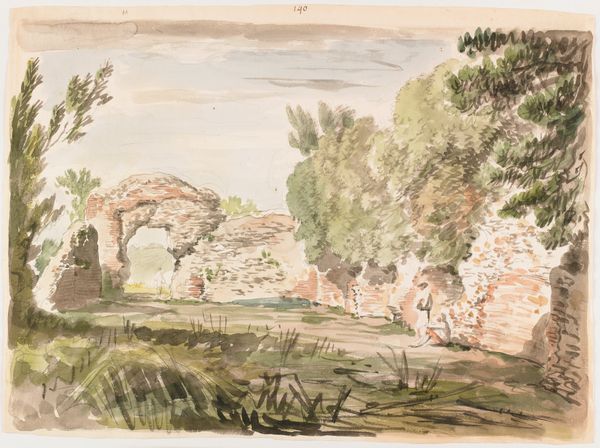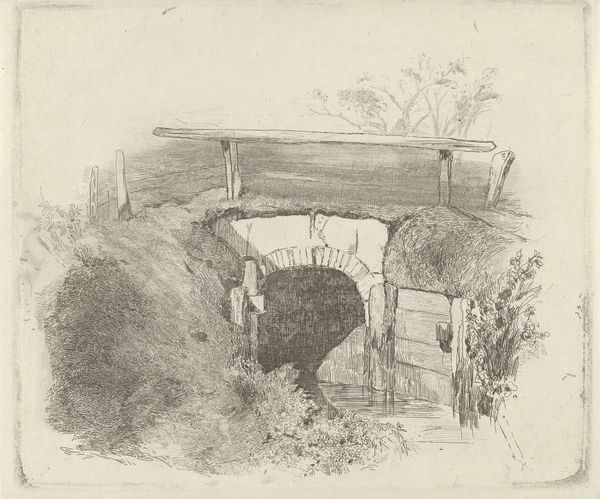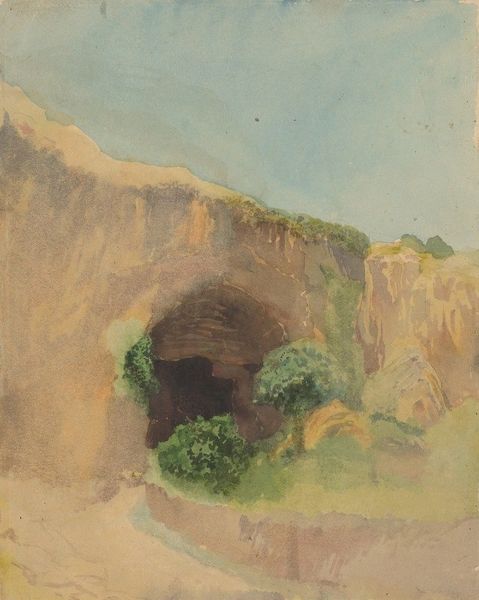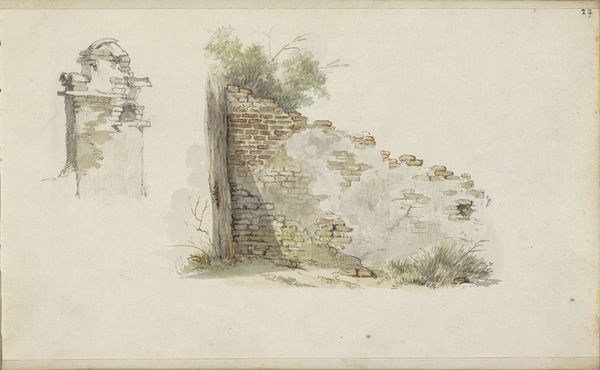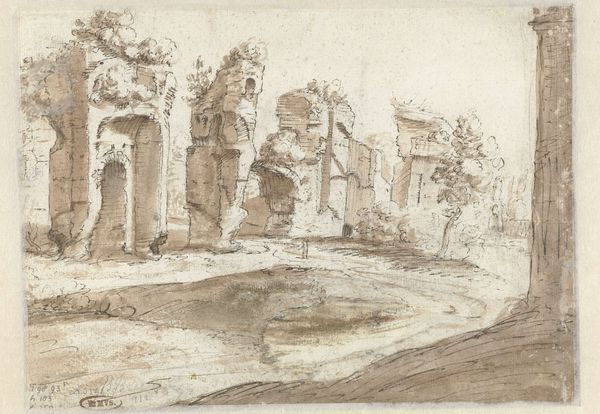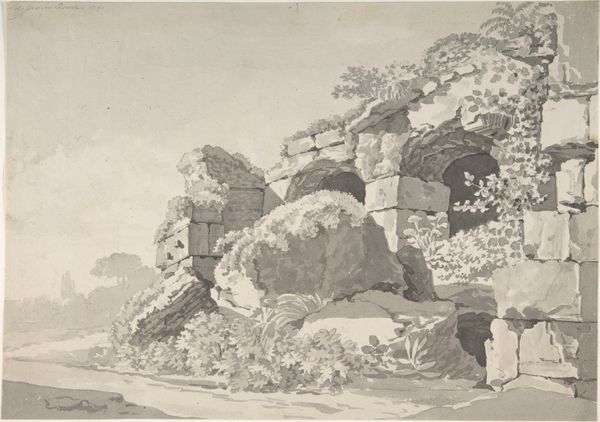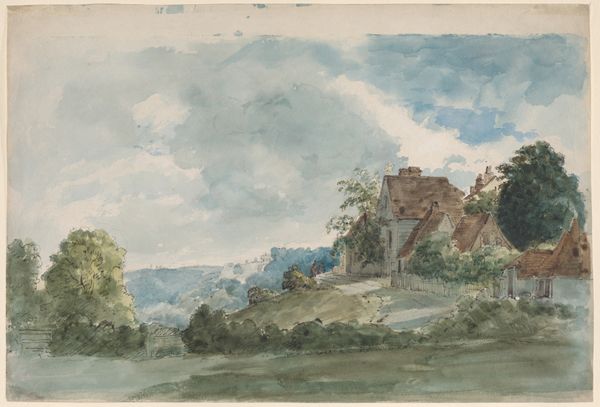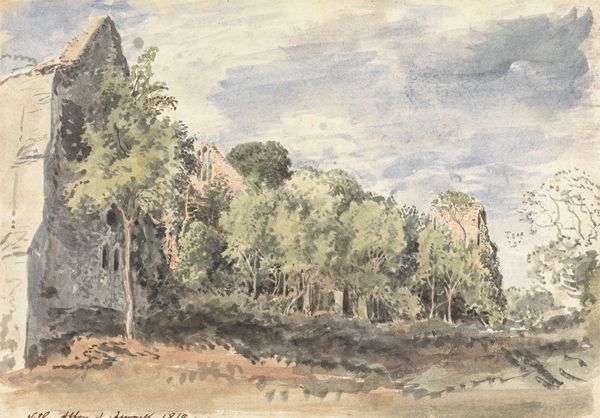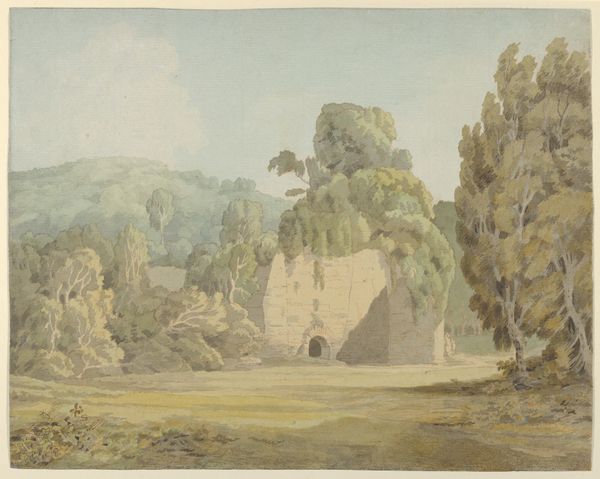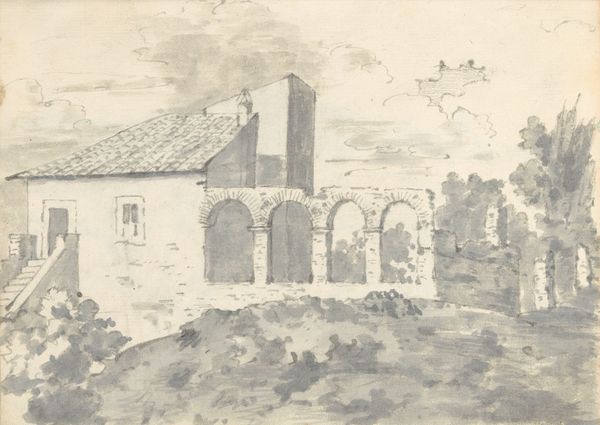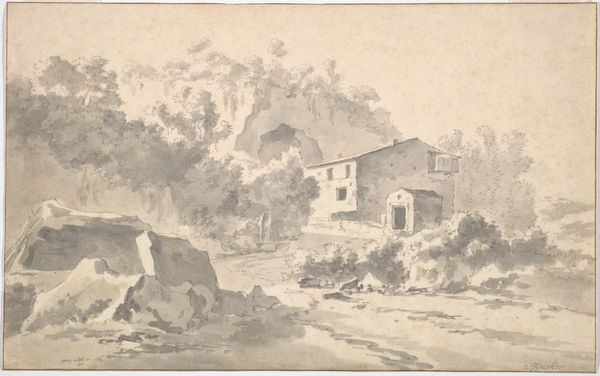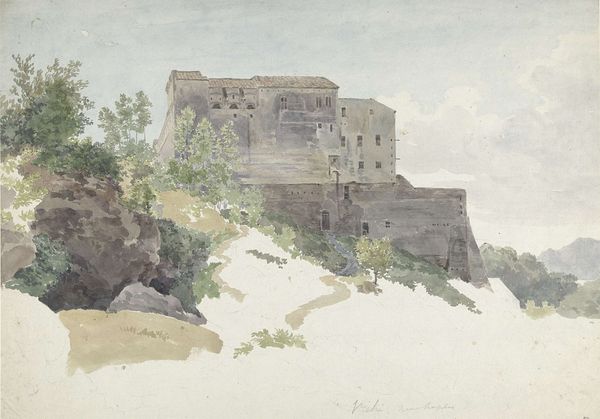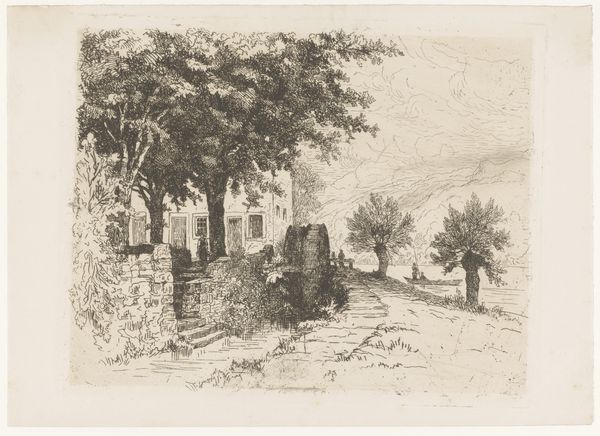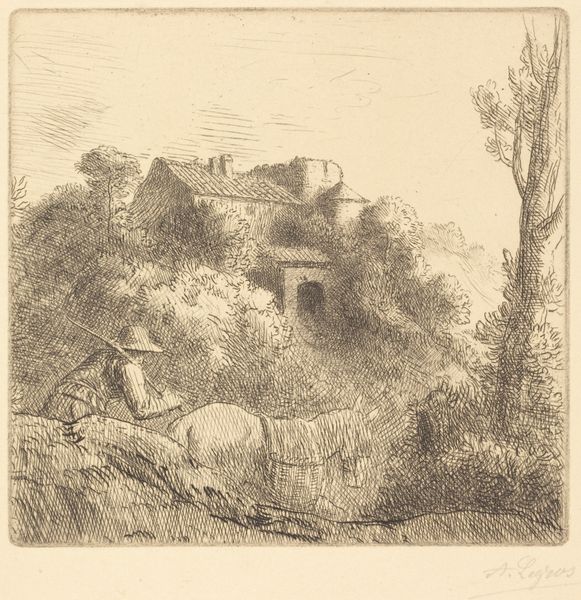
Ancient Roman Ruins Overgrown with Trees and Bushes 1793 - 1795
0:00
0:00
drawing, watercolor
#
drawing
#
landscape
#
watercolor
#
ancient-mediterranean
#
romanticism
#
cityscape
#
realism
Dimensions: sheet: 27.9 × 43.9 cm (11 × 17 5/16 in.)
Copyright: National Gallery of Art: CC0 1.0
Curator: This is Johann Gottfried Klinsky’s “Ancient Roman Ruins Overgrown with Trees and Bushes,” created between 1793 and 1795. It's a watercolor drawing, capturing a scene of, well, exactly what the title describes. Editor: There’s such a delicate sense of melancholic beauty here. The muted tones and crumbling stone almost feel like a lament for a bygone era. I see this piece as reflecting the transient nature of human power against the enduring force of nature. Curator: Absolutely. We're seeing the rise of Romanticism here. It marks a departure from the Enlightenment, emphasizing feeling and individual experience. The ruins are, of course, not just historical relics; they symbolize mortality and the inevitable decline of civilizations. Klinsky positions nature as a redemptive power that reclaims what humanity abandons, even its failures. Editor: Symbolically, the contrast is powerful. The stone structures—representing order, control, and ultimately, impermanence. Against that, we see the organic chaos of the vegetation, symbolizing resilience, freedom, and the cyclical renewal of life. This contrast echoes larger socio-political tensions where power structures meet the forces of social change and popular resistance. What readings have feminist thinkers produced about Romanticism? I'd be interested in their perspective about agency within this context. Curator: Many argue that the sublime in Romanticism, often expressed through landscapes like this, offers a space for negotiating power imbalances and imagining alternative social structures. Think of how contemporary land artists have used similar symbols to question who owns public spaces and how marginalized identities stake their claims to land ownership. Editor: And how about the visual rhetoric? The use of arches and caverns suggests an entry into hidden realms, a collective subconscious perhaps? Curator: That makes sense. Openings can represent opportunities for transformation, a means of entering spaces that history often ignores and writing ourselves back into the narrative. Editor: Ultimately, this piece resonates because it embodies a feeling many of us share. History decays, systems fail. We too will face impermanence. But even amid loss, life flourishes in surprising and disruptive ways. Curator: A powerful statement. Viewing Klinsky's work through a modern lens challenges us to reconsider how we construct meaning in an ever-changing landscape of sociopolitical relations and the power dynamics inherent in place.
Comments
No comments
Be the first to comment and join the conversation on the ultimate creative platform.
